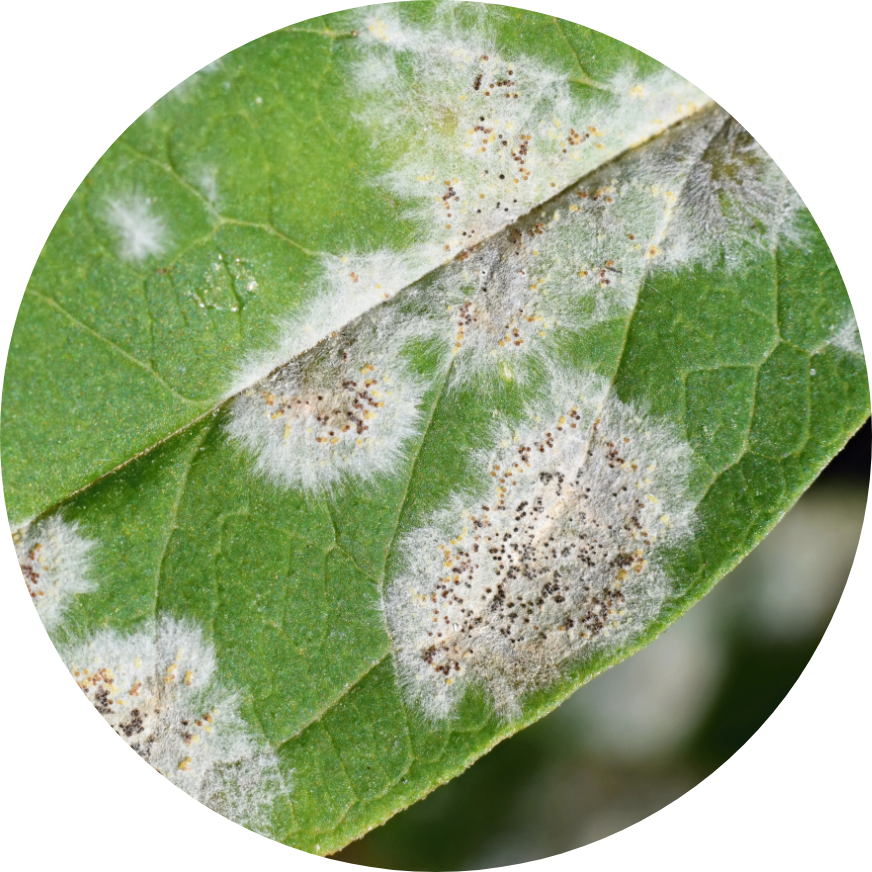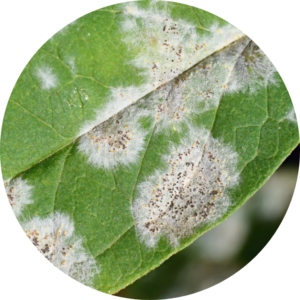Powdery Mildew

Powdery mildew is one of the most common varieties of plant fungi. It affects almost every kind of plant life. However, powdery mildew is host specific. If a tree is infected, you don’t have to worry about your rose bushes becoming infected, too. If left unchecked, the fungus can spread up tree branches, causing them to wither and occasionally die.
The mildew’s powdery appearance derives from millions of small fungal spores, which spread via air currents to other trees in order to establish new areas of infection. The fungus tends to be most active in warm, dry climates. Unlike other bacterial or fungal tree infections, powdery mildew does not need damp surfaces to grow. It does, however, require relatively humid air in order to encourage the spore germination process.
Preventative measures include allowing for greater air circulation by not crowding plants and making sure to thoroughly prune areas of dense foliage in order to create the right conditions. Other proven methods include utilizing slow-release fertilizers that allow for controlled growth and removing infected areas to limit the chances of an outbreak the following year. For treating established infections, spraying the area with wettable sulfur has proven to be a successful course of action. However, be sure to follow the recommended rate specified by the instructions provided. Finally, the regular application of a fungicide can help stop the spread of powdery mildew; apply every 10 to 14 days for the best results.

